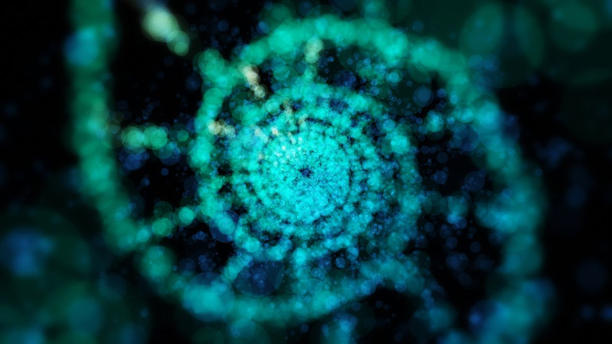Total Pageviews
Thursday 28 September 2023
Monday 25 September 2023
Scientists believe alien life could exist under 'impossible' conditions
Scientists believe alien life could exist under 'impossible' conditions (msn.com)
Scientists have found that one of the key pillars of theory around how life works – that it depends on carbon – may not be the case on other planets.
Here on Earth, life depends on organic compounds which are composed of carbon, and often involve other elements such as sulphur, oxygen, hydrogen, nitrogen and phosphorus.
With organic compounds, life is partly sustained by chemical interactions called autocatalysis, which are self-sustaining.
That means they produce molecules which then enable the reaction to happen again, and do not need any outside influence to keep going on.
In the new study, scientists looked for autocatalysis in non-organic compounds.
The theory is that if autocatalysis helps drive a process called abiogenesis – the origin process for life – then this origin process could also come from non-organic matter.
Betül Kaçar, an astrobiologist, bacteriologist and evolutionary biologist at the University of Wisconsin-Madison, told news outlet Space.com: “It's important to explore these possibilities so that we have an idea of what all forms of life can look like, not just Earth life.”
"One of the major reasons that origin-of-life researchers care about autocatalysis is because reproduction — a key feature of life — is an example of autocatalysis.
“Life catalyses the formation of more life. One cell produces two cells, which can become four and so on.
“As the number of cells multiply, the number and diversity of possible interactions multiplies accordingly.”
The scientists searched in a huge trove of existing scientific documents for examples of autocatalysis, and found 270 different cycles of the reactions.
Most of the 270 examples did not feature organic compounds, but rather elements which are rare in life forms such as mercury, or the radioactive metal thorium.
“It was thought that these sorts of reactions are very rare,” Kaçar said in a statement. “We are showing that it's actually far from rare. You just need to look in the right place.”
Now, it means scientists can test these cycles to get a better understanding of how autocatalysis can work.
“The cycles presented here are an array of basic recipes that can be mixed and matched in ways that haven't been tried before on our planet,” said study author Zhen Peng, also an evolutionary biologist at the University of Wisconsin-Madison.
“They might lead to the discovery of completely new examples of complex chemistry that work in conditions where carbon- or even silicon-based cycles are too either combusted or frozen out.”
The scientists published their findings in the Journal of the American Chemical Society.
Wednesday 20 September 2023
Monday 18 September 2023
Sunday 17 September 2023
Tuesday 12 September 2023
The Emilcin, Poland, UFO encounter and alien abduction of farmer Jan Wol...
What We Have Been Looking For? Methane and carbon dioxide found in atmosphere of habitable-zone exoplanet
We keeping aiming our detectors at deep space -111 light years in this instance. We might find similar results if we concentrated on closer star systems but for many astronomers 111 light years is "safely far away"
Image for visual usehttps://www.cam.ac.uk/stories/carbon-found-in-habitable-zone-exoplanet
By Sarah Collins
Published 11 September 2023
An international team of astronomers led by the University of Cambridge has used data from the NASA/ESA/CSA James Webb Space Telescope to discover methane and carbon dioxide in the atmosphere of K2-18 b, an exoplanet in the ‘Goldilocks zone’. This is the first time that carbon-based molecules have been discovered in the atmosphere of an exoplanet in the habitable zone.
The results are consistent with an ocean-covered surface underneath a hydrogen-rich atmosphere. The discovery provides a glimpse into a planet unlike anything else in our Solar System, and raises interesting prospects about potentially habitable worlds elsewhere in the Universe.
K2-18 b — which is 8.6 times as massive as Earth — orbits the cool dwarf star K2-18 in the habitable zone and lies 110 light years from Earth in the constellation of Leo. A first insight into the atmosphere of K2-18 b came from observations with the Hubble Space Telescope but the atmospheric composition has been a subject of debate. The same researchers studied K2-18 b in 2020 and 2021, and identified it as belonging to a new class of habitable exoplanets called ‘Hycean’ worlds which could accelerate the search for life elsewhere. This prompted them to take a more detailed look with JWST, Hubble’s successor.
Using JWST’s higher resolution instruments, this new investigation has definitively identified methane and carbon dioxide in a hydrogen-rich atmosphere on K2-18 b.
The researchers also identified another, weaker, signal in the K2-18 b spectrum. After several analyses, the researchers say that the signal could be caused by a molecule called dimethyl sulphide (DMS). On Earth, DMS is only produced by life, primarily microbial life such as marine phytoplankton, suggesting the possibility of biological activity on K2-18 b. While these signs of DMS are tentative and require further validation, the researchers say that K2-18 b and other Hycean planets could be our best chance to find life outside our Solar System.
The result, which have been accepted for publication in The Astrophysical Journal Letters, will be presented today (11 September) at the First Year of JWST Science Conference in Baltimore, Maryland, USA.
Are We Going to Let All of the Information Fade Away: Or Are We Going To Do Something About It?
originally published in 2018 on the AOP Blog I would like to offer this page from Patrick Gross' Ufologie page. It shows the results f...
-
Updating the French CE3K/AE file has stopped for the moment so thaty I can tidy up the Belgian file. Much smaller but some interesting rep...
-
Terry Hooper-Scharf 220 pages A4 perfect bound paperback Fully illustrated with photographs and illustrations £20.00 (excl. VAT) Prints i...




